How to Raise Chickens for Cheap!
Do you want to learn how to raise chickens for cheap? Chickens…the gateway farm animal. In my opinion, there’s nothing closer to a free lunch than having chickens forage in your yard and produce a bounty of delicious eggs and meat.
Other farm animals are either really expensive to buy or require more time or work before they can give you a return on your investment. However, baby chicks are cheap. And hens will generally start laying eggs at around 5 months old!
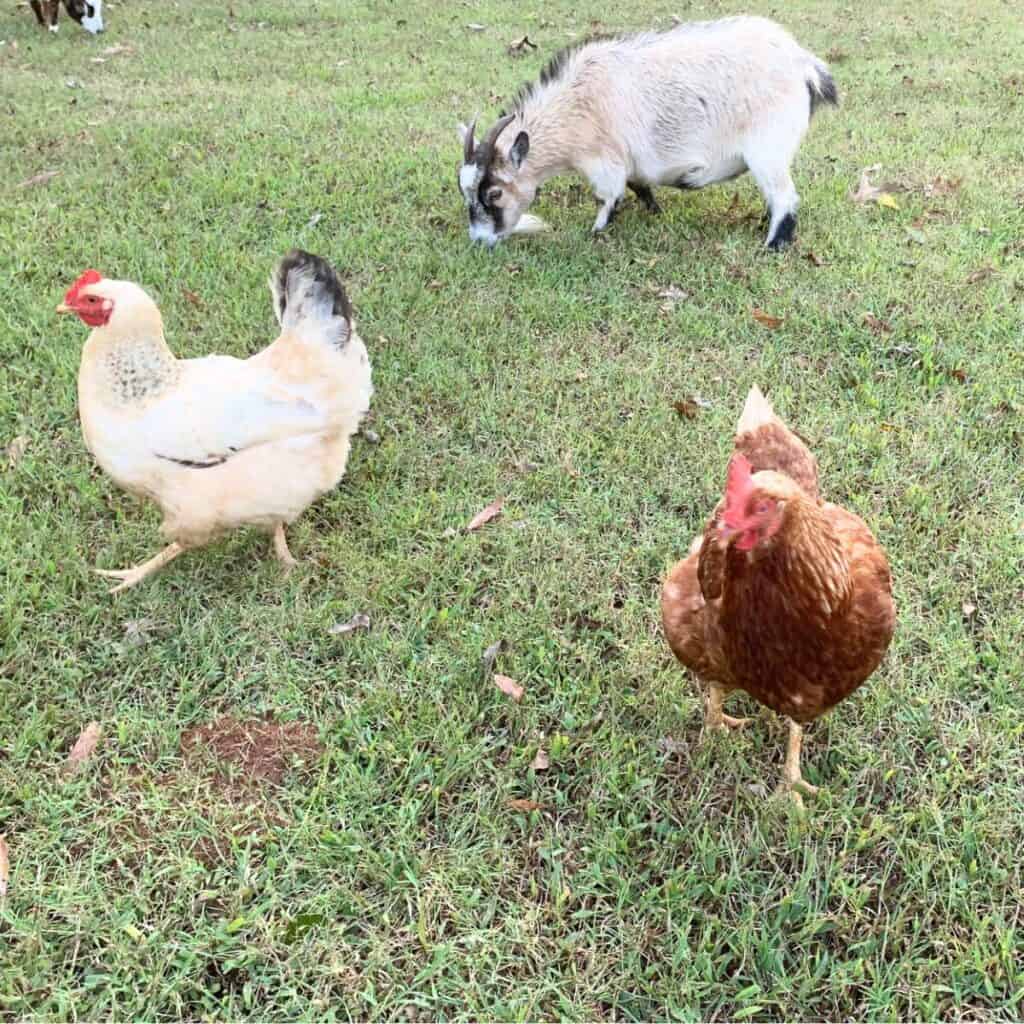
When I think of ways to feed my family for cheap, chickens come to mind. In my opinion, chickens are one of the cheapest food sources in terms of work and cost.
Of course, you CAN spend as much as you want to raise your chickens. However, my goal is to spend the least amount of money and chore time to get a bounty of meat and eggs.
Is that laziness or efficiency? I’m going with efficiency! But that’s pretty much my goal with everything on the homestead. “What’s the least amount of money and time I can spend for the most return?”
This post contains affiliate links, which means I make a small commission at no extra cost to you. Read my full disclosure here. Thanks for your support!
How to Raise Chickens for Cheap
There are several reasons why we are able to raise our chickens for cheap. You can tailor the list to what works for you but hopefully this will give you some tips that maybe you haven’t thought of yet.
You can save hundreds of dollars each year on meat and eggs if you keep your own backyard chicken flock. I want to encourage you to start where you’re at and follow these tips that have helped us!
- Stop buying food when your chickens can find food and feed themselves.
- Keep guardian livestock dogs to protect your chickens from predators.
- Keep a rooster for every ten hens to provide more protection and make babies.
- Hatch your own baby chicks in an incubator.
- Choose heavy, standard size breeds of chickens that can’t fly away.
- Build your own chicken coop.
- Choose chickens that have natural camouflage.
1. Stop buying food when your chickens can find food and feed themselves.
I wrote an entire blog post about how we raise livestock for cheap and the biggest savings secret is to save on feed costs.
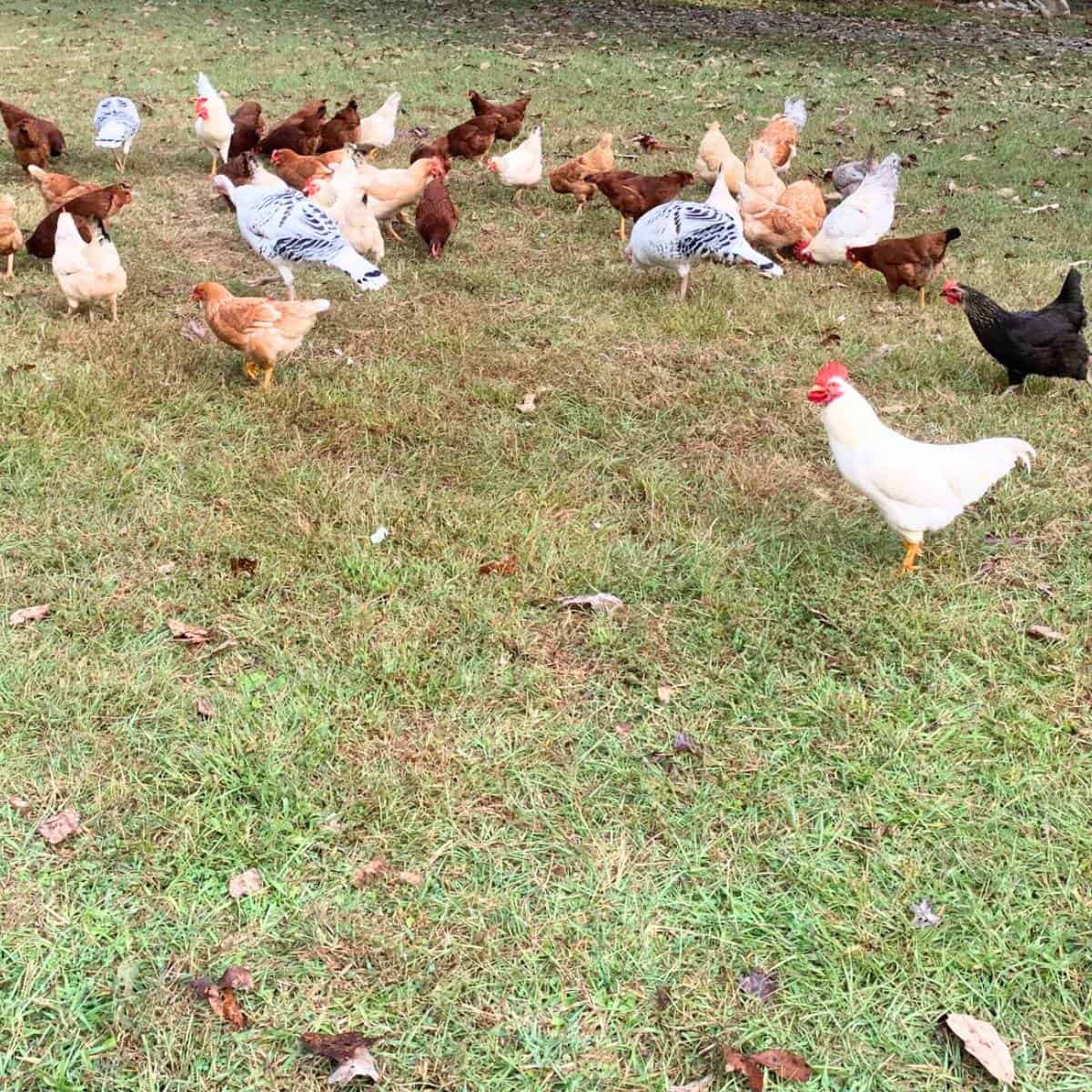
It might not be an option for everyone all of the time, but we like to let our chickens forage for their own food when they reach a certain size and age. Then they are 100% free all of the time.
Generally speaking, one bag of organic chicken starter and one bag of organic chicken grower is all we need per incubator batch of babies we start and grow.
We feed the babies the chick starter for the first 4 weeks and the grower starting at 5 weeks until they are fully feathered and can fit in with all the adult chickens who free-range. Usually around 6-8 weeks our baby chicks are big enough to find food and feed themselves.
You can easily save hundreds if not thousands of dollars by skipping the food bill!
2. Keep guardian livestock dogs to protect your chickens from predators.
This goes hand-in-hand with letting your chickens free-range, but guardian livestock dogs will protect your chickens from predators.

Chickens are an easy target for most predators like coyotes, raccoons, foxes, possums, and other domestic or wild dogs. Your guardian livestock dogs will protect them faithfully so that you don’t have as many (or any) losses.
Granted, when we first moved to the farm and got chickens for the first time, our city dogs were not trained to protect them and we did have some losses…usually from the dogs.
We had to work with them to protect and not chase and kill the chickens, but they eventually learned and we haven’t had any losses due to them in a long time.
3. Keep a rooster for every ten hens to provide more protection and make babies.
Guardian livestock dogs are priceless, but you should also consider keeping a rooster for every ten hens to provide even more protection and to make baby chicks!
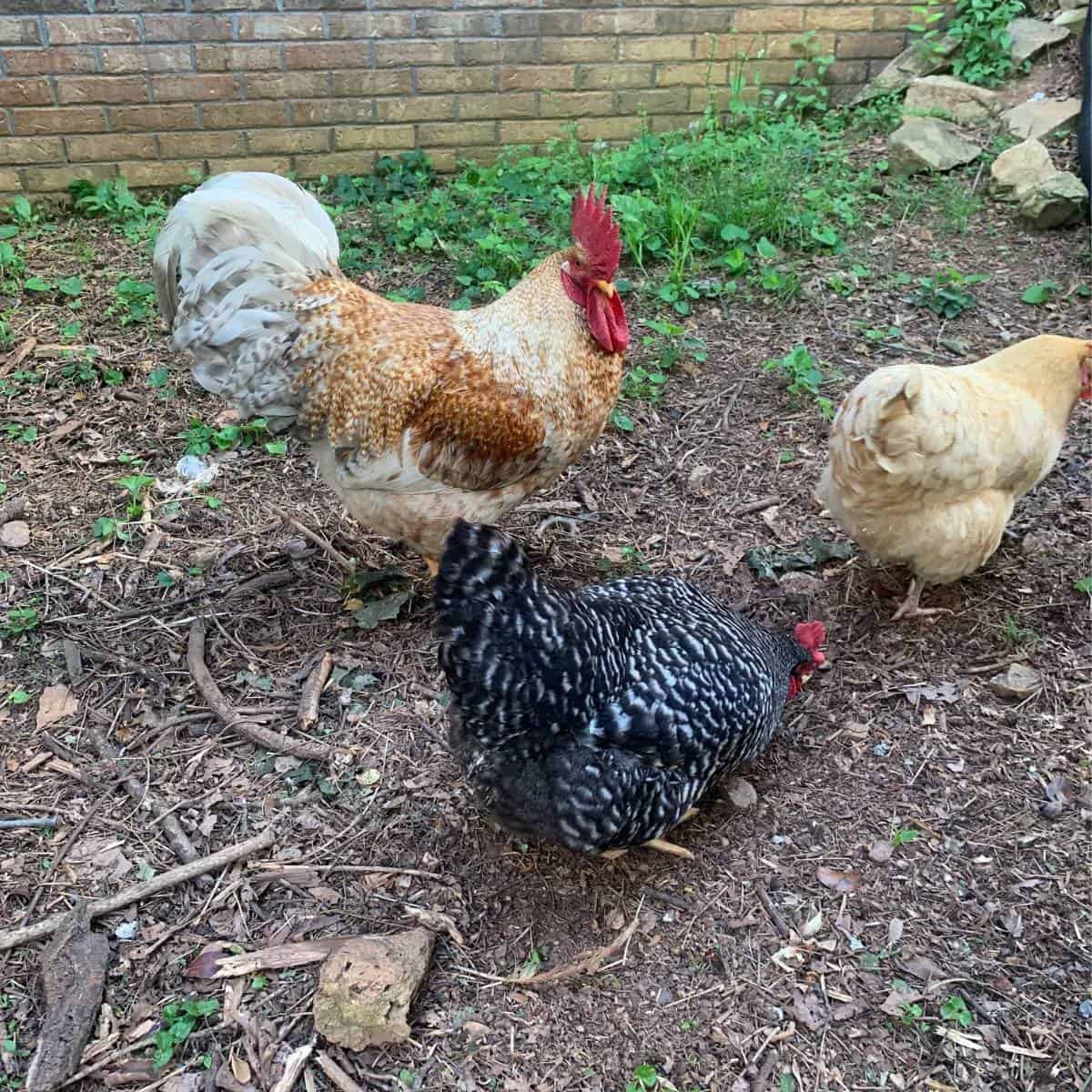
We currently have four roosters and they each have a group of hens that hang around them. It’s precious to watch good roosters protect their hens.
Our roosters will lead or follow the hens during the day and keep a watchful eye on the sky while the hens peck and scratch at the ground looking for food.
Our dogs are great at picking up the scent of land predators and their speed can’t be matched by the roosters. So, the dogs handle any land predators.
But the sky is also full of aerial predators in our area. Our roosters watch the sky almost constantly in between pecking the ground looking for food.
When a hawk comes into view, the roosters stand up straight, flap their wings, and crow loudly so that the hens know a threat is coming. Then they will waddle to the nearest shelter or bush to hide themselves from the hawk’s view.
Roosters are not necessary for a hen to lay an egg, which is a common myth. But they ARE necessary if you want those eggs to turn into baby chickens.
If you keep a rooster, chances are your eggs are well-fertilized. It’s perfectly fine to eat those eggs because there is no noticeable difference between an unfertilized and a fertilized egg.
If your goal is to raise chickens for cheap, skip the hatchery and close the production loop to be sustainable! That brings me to the next tip.
4. Hatch your own baby chicks in an incubator.
You can save hundreds of dollars each year by skipping the hatchery and hatching your own baby chicks in an incubator. Alternatively, if you have a good broody hen or turkey, they will be more than happy to sit on a clutch of eggs to hatch some babies for you!
We love the Manna Pro Harris Farms Nurture Right incubator that we use. It holds 22 chicken eggs but can also be used to hatch turkey, duck, goose, quail, pheasant, and other eggs.
Chicken eggs take 21 days of incubation to hatch a baby chick. Just 3 weeks!
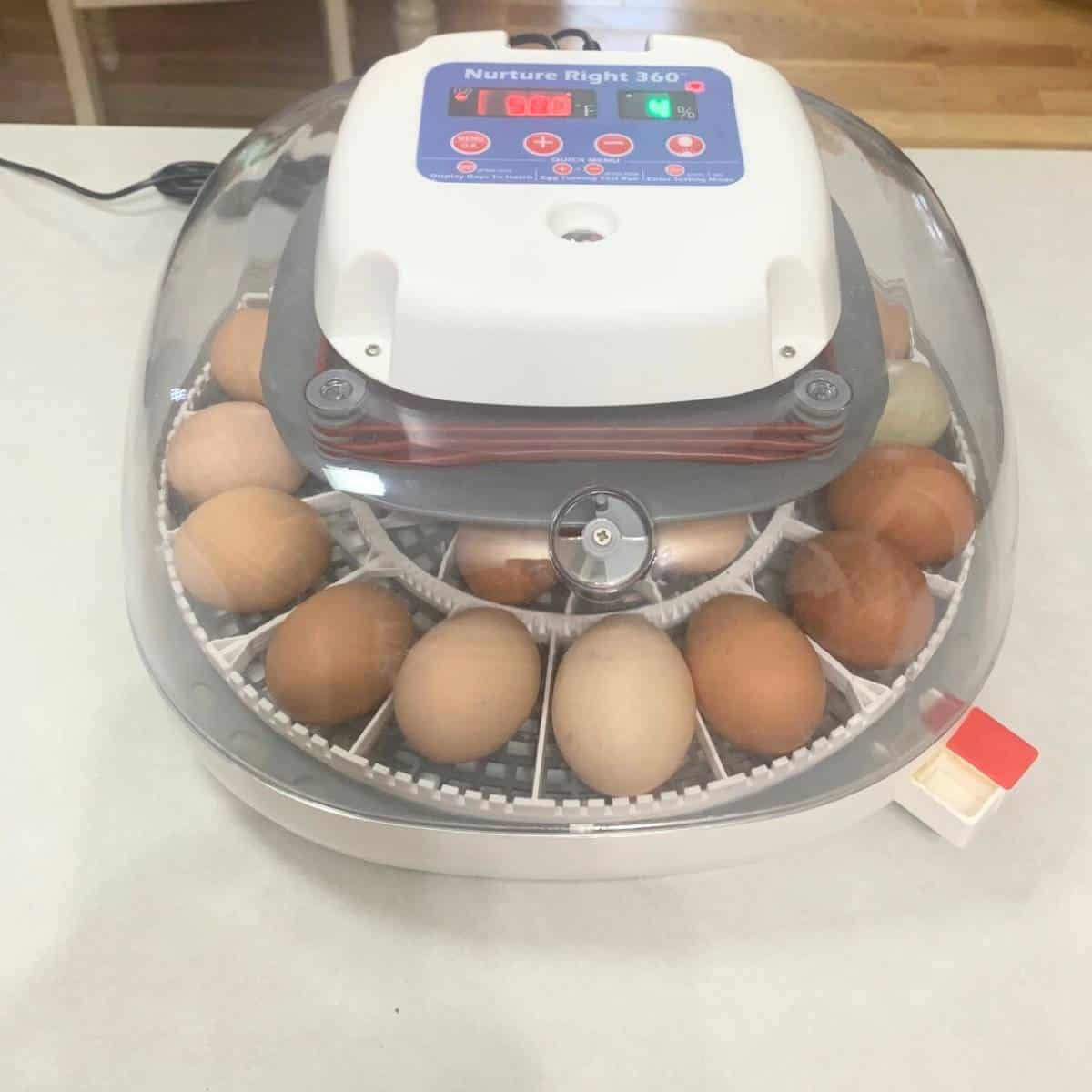
We hatch several batches of eggs each year, and I find that 22 babies is the perfect amount for us to manage at a time.
My sweet husband built a great brooder for me and I don’t like to put too many babies in it even though it could hold more. When the chicks feel like they’re crowded, generally some of them get picked on.
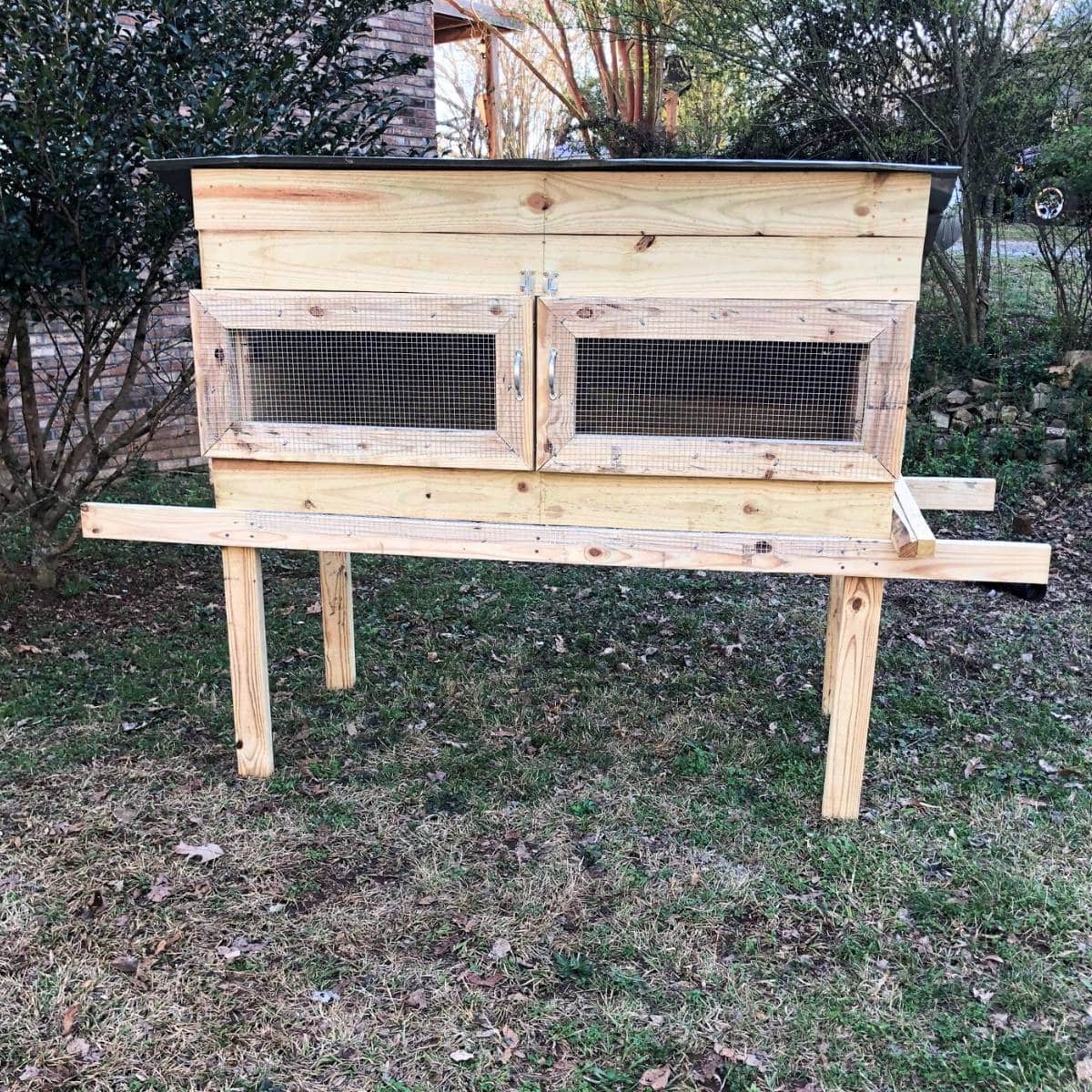
By the time the first batch of 22 chicks is ready to leave the brooder (at 3 weeks of age) and go into the mobile coop, the next batch of eggs will be hatching and those babies will need the brooder.
Likewise, when the chicks in the mobile coop reach 6 weeks of age, they can graduate to a larger mobile coop (if necessary), or be free to join the adult chickens. The brooder chicks move up to the mobile coop, and the hatched incubator eggs go into the brooder. It’s a nice 3-week cycle at each station.
Our incubator is in continuous use from mid-February to late June. I wrote an entire post on how to hatch eggs using an incubator if you’d like to learn more!
5. Choose heavy, standard size breeds of chickens that can’t fly away.
If your goal is to raise chickens for cheap, choose a heavy breed of chicken that can’t fly away.
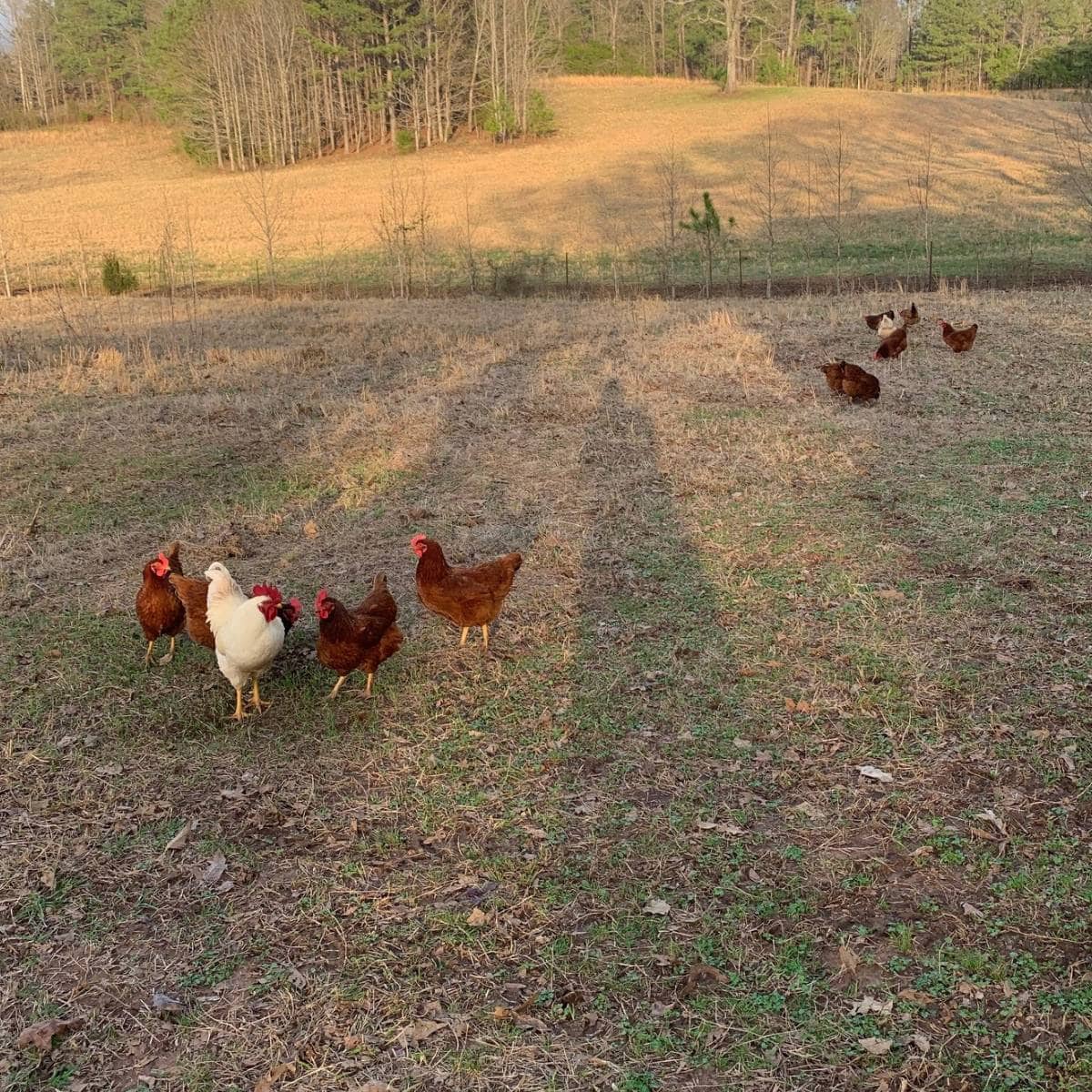
Although bantam, serama, silkie, and other small chicken breeds are adorable, they can fly away!
You want to keep the chickens that you buy or hatch yourself, pay to feed, and spend time growing, long enough to start producing eggs or harvest them for meat.
If you choose small breeds of chickens, your effort will be futile because you will likely see your dollars fly away. So do your research and choose heavy breeds.
Also, the larger size chickens will produce larger eggs and more meat for your effort, giving them a higher return on investment. It’s a win-win!
6. Build your own chicken coop.
You can save hundreds of dollars by building your own chicken coop instead of buying one pre-made. Those kits cost a lot of money and don’t always provide the best protection, either.
I have a great resource to share with you. You can go to Easy Coops to get incredible step-by-step instructions (complete with color pictures) to build your own chicken coop. And the best part is…they have over 40 plans for FREE!
And the plans range from a small chicken tractor for 3 chickens all the way up to huge chicken houses with runs for up to 50 chickens. There’s a ton of inspiration on their site. I wish we had discovered them when we were building our own coops!
Check out all the FREE chicken coop plans from Easy Coops to get inspiration and instructions for your next chicken coop project!
If you need more details than what’s included in the extensive free plans, they also sell premium plans for under $20. The premium plans will tell you and show you absolutely everything you need to do to build the coop you select.
7. Choose chickens that have natural camouflage.
When it comes to raising chickens for the cheapest amount of money, it pays to have chickens that are not easily picked off by aerial predators. It’s a good idea to get chickens that have natural camouflage in their feathers to blend in with your surroundings.
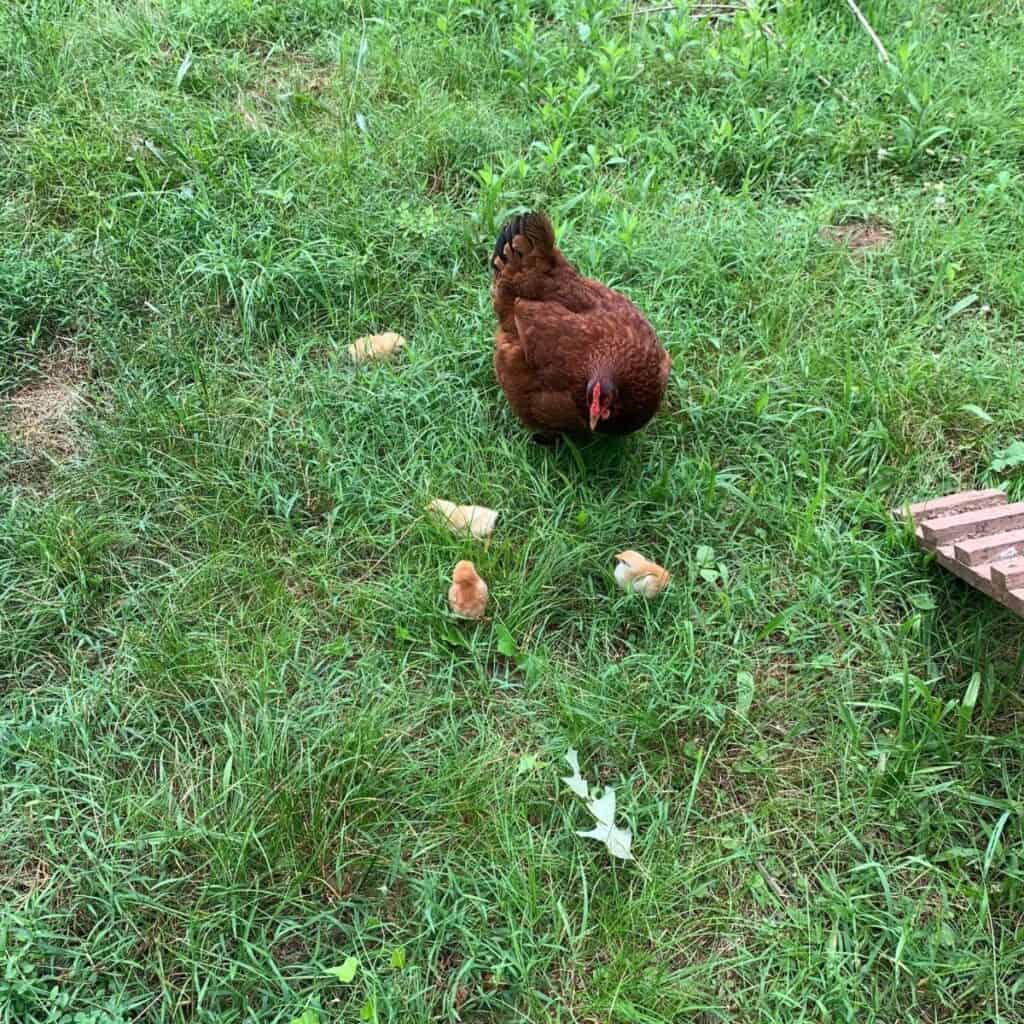
We have hawks and American bald eagles that live near our farm. I’m sure that there are other aerial predators, but these are the most notorious for picking off backyard chickens.
We bought some beautiful American Bresse chicks. Their name comes from how patriotic their colors are…deep red combs on their head, pure white feathers on their body and tail, and blue legs and feet. So, red, white, and blue! How cute!!
However, when we let those chickens start free ranging when they got big enough, they started getting picked off one by one over the course of several days. We did all the things we knew to do to protect them.
We moved their night coop close to our house. We made sure our guardian livestock dogs stayed close to them to protect them. And we checked our game trail cameras thinking coyotes or stray dogs were getting through our defenses.
Then my sweet husband discovered the truth when he interrupted a hawk attacking one of them. He scared the hawk off, but it was too late for our American Bresse and she died.
The simple truth is that this breed of chickens with their stark white feathers did NOT blend into our green, brown, and golden landscape. They were easily spotted and couldn’t hide from aerial predators.
So, please learn from our mistake and get chickens that have different feather colors and patterns, and ones that can blend in well with their surroundings.
Summary of How to Raise Chickens for Cheap
Remember…if you follow these tips, you can save several hundred dollars each year and several thousand dollars over a lifetime while getting an abundant harvest of meat and eggs if you keep chickens!
- Stop buying food when your chickens can find food and feed themselves.
- Keep guardian livestock dogs to protect your chickens from predators.
- Keep a rooster for every ten hens to provide more protection and make babies.
- Hatch your own baby chicks in an incubator.
- Choose heavy, standard size breeds of chickens that can’t fly away.
- Build your own chicken coop.
- Choose chickens that have natural camouflage.
Shop This Post!
New Country Organics Soy-Free Poultry Starter, 25 lbs
New Country Organics Soy-Free Grower Broiler, 25 lbs
Pin It for Later!

Other Related Posts
How to Hatch Eggs Using an Incubator
When is the Best Time to Order Baby Chicks?
Why Living in the Country is Cheaper


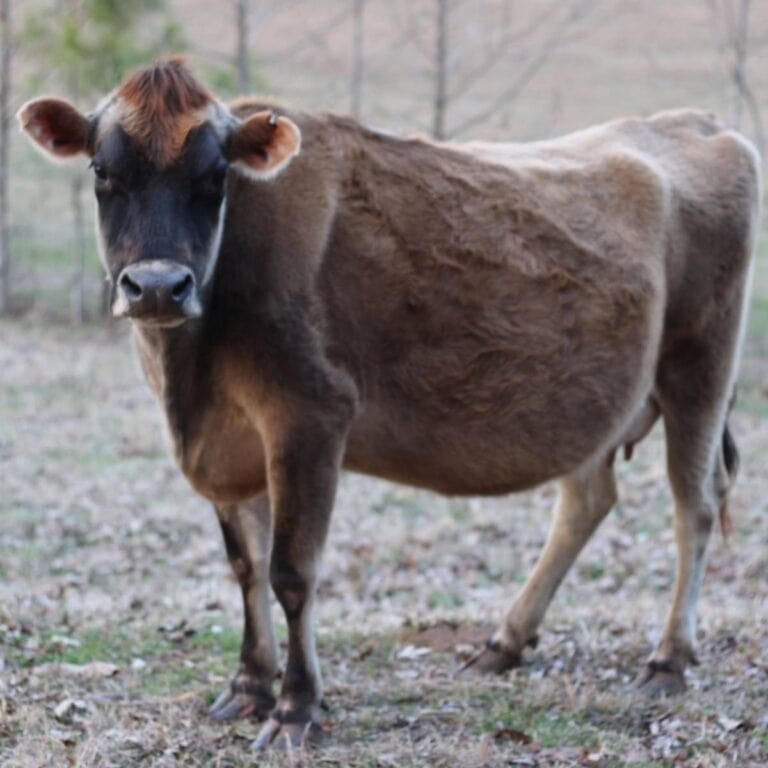
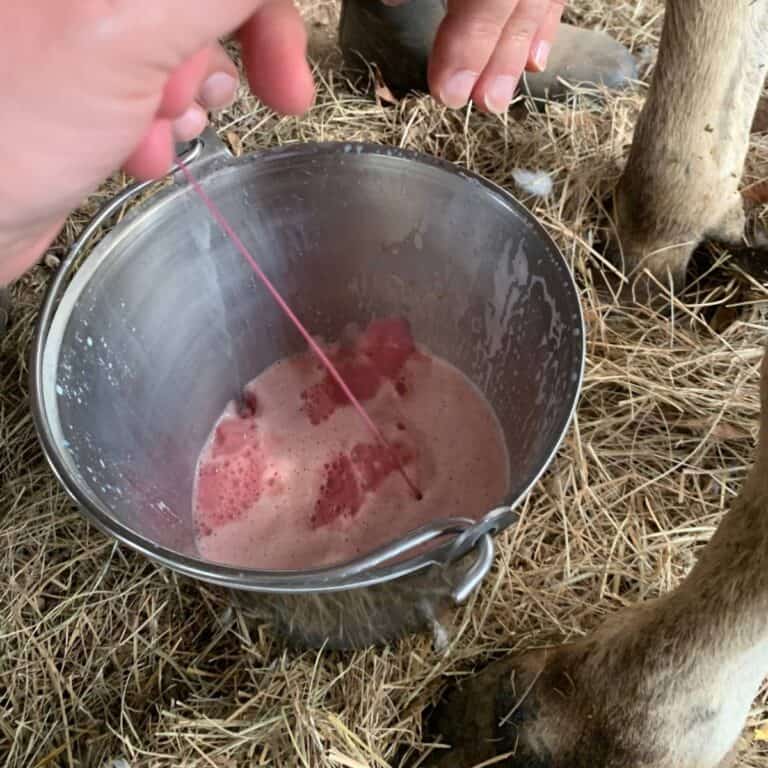
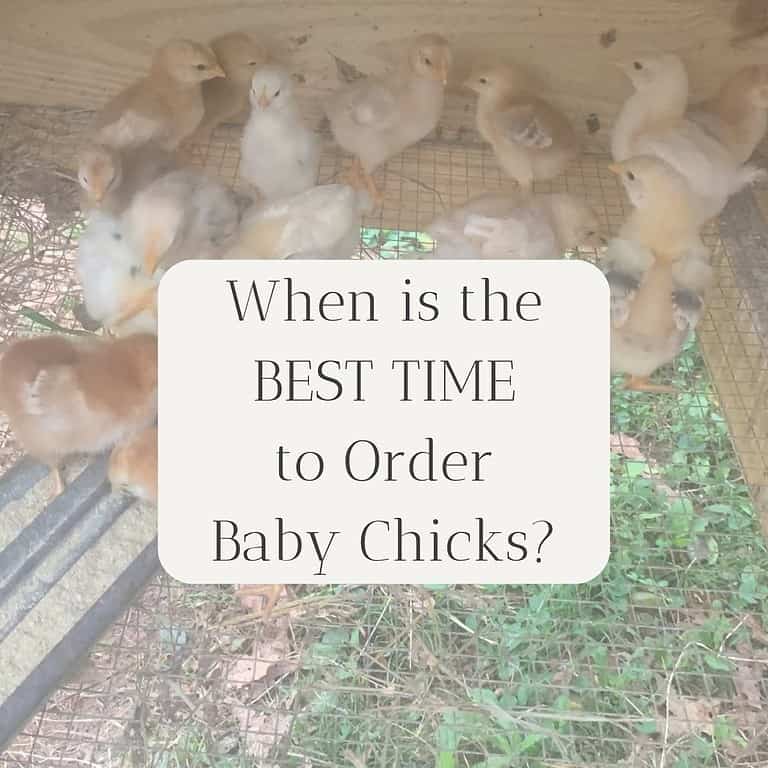
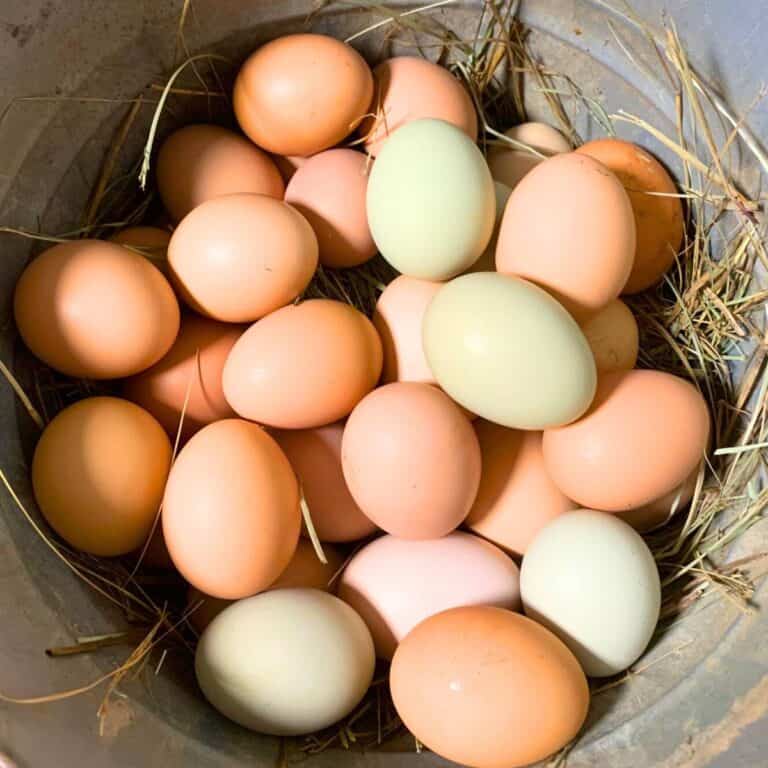
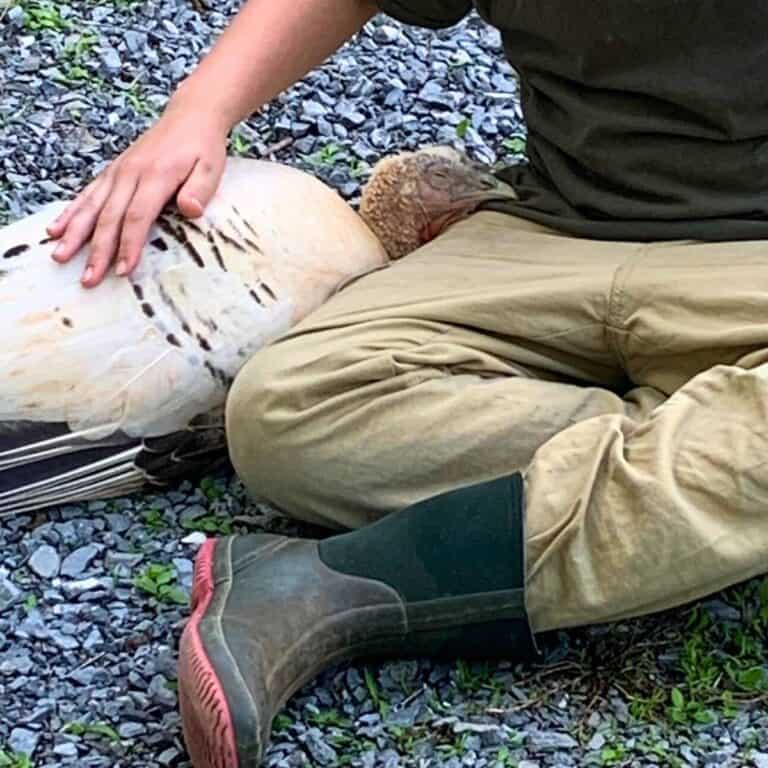
Hi there, interesting ideas. Glad I stumbled upon this. Been considering having little animals around and trying to learn about them as much as I can. Very helpful.
Such a great info on this post! If don’t know any tricks they can definitely be really expensive!
I love the idea to let them forage as much as possible! Okay… so this is going to sound dumb… but is an incubator that much different than a dehydrator? I don’t think my dehydrator actually affects the humidity- it just heats lol. I promise I don’t own chickens and haven’t dehydrated any chicks 🙂
No dumb questions exist…haha. You can’t hatch eggs using a dehydrator, although if something happens to a hen who is sitting on a clutch of eggs, in a pinch I have been able to hatch eggs for the rest of their time using my oven with the oven light turned on- No Heat!- before we had an incubator. I was desperate for the babies to survive, I would have tried anything! I live in central Alabama and it’s always humid here, so I assume that’s why I was able to hatch the eggs in my oven with just the light turned on. The key to hatching eggs that way is to turn the eggs a couple of times every day so the chicks grow properly. It was a poor hatch rate but probably half of them hatched after several days. The incubator is definitely the way to go and it’s specially made to turn the eggs automatically every hour or so. And the temperature stays constant at 99.5 degrees F. Also, the humidity stays relatively constant if you add the little bit of water the incubator needs every day. In 21 days you’ll almost definitely have a baby chick as long as the eggs were fertilized! 🐣
I was gifted a small coop and will be starting my own flock soon, so I really appreciate these tips! Especially letting them forage for most of their food! 🙂
You’re welcome!!
I haven’t been brave enough to hatch my own chicks yet but I’ve had chickens for several years. I love the brooder your husband built!
If it’s a matter of bravery, let me encourage you to give it a try if you have a rooster to fertilize your eggs! You’ll never regret being self-sufficient for your chicken in the future. And thanks for the compliment on the brooder! I’ll let my other half know!
This is such great info. I can’t wait until we have land! Such a long-time dream of ours.
Chickens surely are the gateway farm animal! They are so much fun to watch and have around. But they are just as useful as they are productive for us because we haven’t had any pest problems around our house and the cow pasture and barn stalls are always so clean! (The barn chickens scratch through the cow droppings and clean the pasture and barn stalls up so nice!)
Such a relief to find you spend so little on food! I’ve read about others who are spending $100 a month and I thought there was something wrong with me. We got our first ones at 16 weeks and they’ve gone through 2 bags of layer feed equaling $30 since November. But they completely free range on 36 acres and it’s pretty warm here. So I was wondering if I could take away the food entirely? I didn’t know if they needed any extra food besides what they get outside. Thanks for your information! With 10 children I’m definitely a frugal person and am so happy to find this blog is too. I’m going to be checking your other posts!
Hi and thank you! Yes, I’m definitely frugal and try to squeeze a dime out of a nickel whenever I get the chance!! If your chickens have access to as much food as they want outside from morning until dusk, they can absolutely get all of their food and nutrition outside without you giving them any extra food. But everyone loves a free meal so if you provide them with food, they’ll be sure to eat it up!😉 It’s pretty warm here in central Alabama, too, so the only time we do give our chickens food is for a few weeks during the winter (eating cracked corn helps keep them warm on cold days and nights). However, some of our property is filled with trees and I’ve noticed the chickens do a lot of scratching under the fallen leaves (which insulate and help keep in the warmth for ground worms and grubs during winter), so the chickens still get plenty of bugs even in the winter! You might also be interested in this food-savings-related post: https://riversfamilyfarm.com/the-secret-to-raising-livestock-for-cheap/.
This is such a great article. I’m saving it for when we either move or our village finally allows us to have chickens.
Thank you!
We just hatched more chicks on our farm as well! Our hens are getting older and aren’t laying as much so can’t wait to see these babies grow and produce more eggs. Thanks for sharing!